Research and Development
The Tsubaki Group is aiming to establish Linked Automation as the area of technology that links highly functional and highly automated technologies to solve the social issues outlined in the Long-Term Vision.
Tsubaki’s Technologies
Tsubaki’s wide-ranging business evolution, from parts and units to modules and systems, is rare in the industrial world and represents a significant asset. As a manufacturing company, we remain focused on strengthening and expanding our technical fields, while simultaneously promoting research and development in fusion technologies with an eye on the future.
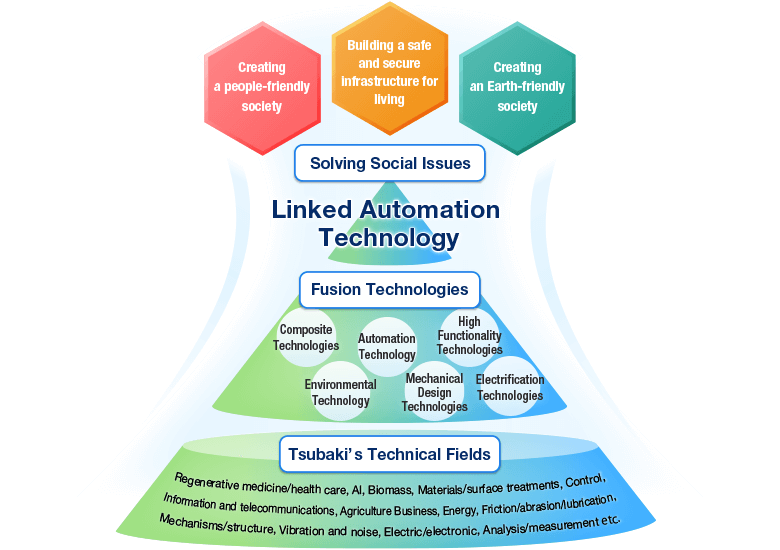
Fusion Technologies
The Tsubaki Group is striving to solve issues in society by fusing our superior technologies with technologies that will be needed in the future, based on the core technologies we have accumulated.
Technologies that demonstrate Tsubaki's technological superiority
-
Mechanical Design Technologies
These are design technologies for machinery and mechanisms that need to be highly reliable, such as wrapping transmissions and parts and units for automobiles. We are moving forward with the development of foundational technologies as a machinery manufacturer.
-
High Functionality Technologies
These are materials technologies that provide high functionality and high reliability, such as those used in chain and mobility products. We are developing technologies to create high functionality Tsubaki products.
-
Electrification Technologies
These are control technologies for drive components such as motors and systematized applications. Our products meet a wide range of customers’ needs, from parts and units to entire systems.
Technologies Required to Solve Issues in Society
-
Automation Technology
Cutting-edge automation and unmanned automation technologies such as human-assist devices (healthcare, etc.), soft robotics, IoT/AI utilization, high-performance control, sensing technology, information and communications, unmanned logistics, agriculture and life sciences.
-
Environmental Technology
Our environmental technologies are intended to contribute to long service life, weight reduction, miniaturization, high strength, quiet operation, and the use of new energy-efficient materials for energy saving (including optimization and evaluation technologies, and systematization technologies).
-
Composite Technologies
Technologies that optimize and integrate multiple devices and facilities that provide different functions. For example, they link the technologies of each business division with technologies provided by other companies, or they integrate mechanical, control, and information technologies.
Tsubaki’s Research and Development System
We are strengthening our system for industry-industry and industry-academia co-creation centering on the DX・IT・Reserch & Development Center to develop high added-value products that have a deep significance in society.
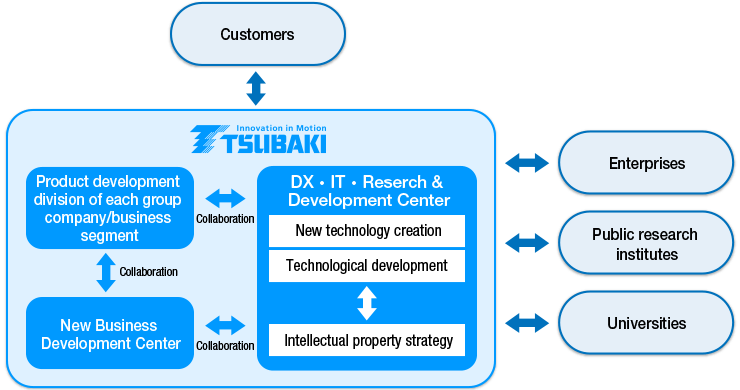
Functions of the DX・IT・Reserch & Development Center
| New technology creation | Development of superior products using highly original technologies |
|---|---|
| Technological development | Strengthen our abilities in mechanisms/structures, materials/surface treatments, friction/abrasion/lubrication, AI, agriculture business, biomass, and other technical fields |
| Intellectual property strategy | Undertake global expansion of intellectual property strategies in collaboration with the various business divisions. |
| Co-creation in the Tsubaki Group | Develop commissioned themes (new products) from business divisions and Group companies, horizontally deploy advanced technologies, create value through technology expos, etc. |
Trends of R&D Costs and Ratio of R&D Costs to Net Sales
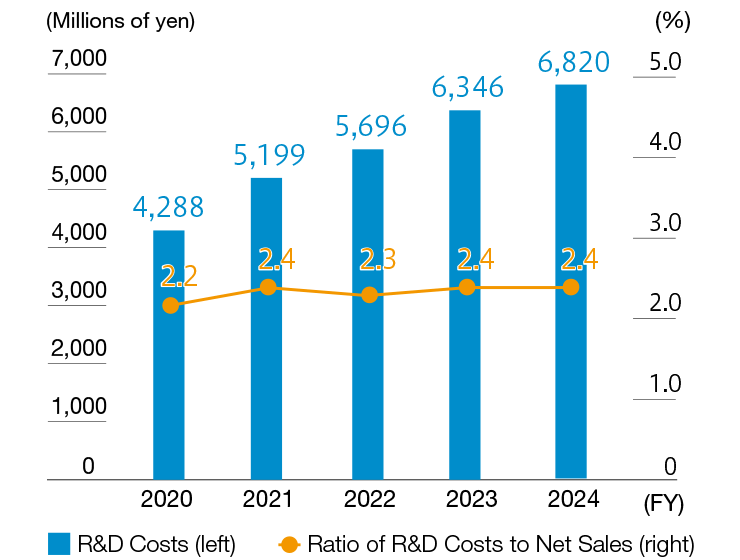
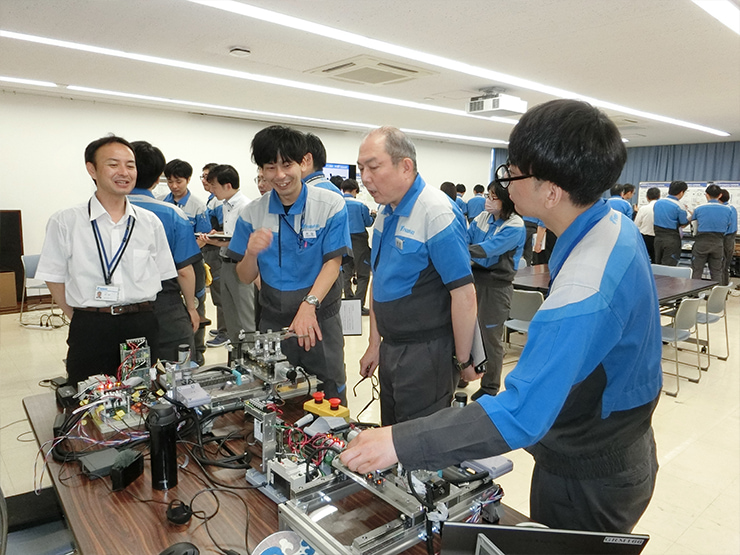
The Process of Inspiring Innovation
The Tsubaki Group is focused on generating opportunities for co-creation. This involves supporting open innovation and strengthening cross-divisional deployment with the various business divisions, as well as developing an environment in which our engineers naturally seek to innovate.
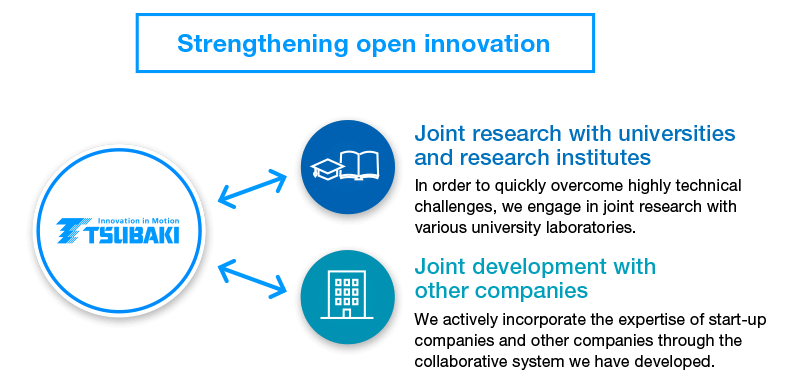
Recent R&D Themes
Please refer to the Tsubaki Technical Review (technical information magazine) for the most recent R&D themes.
Technical Journals *Japanese Version


